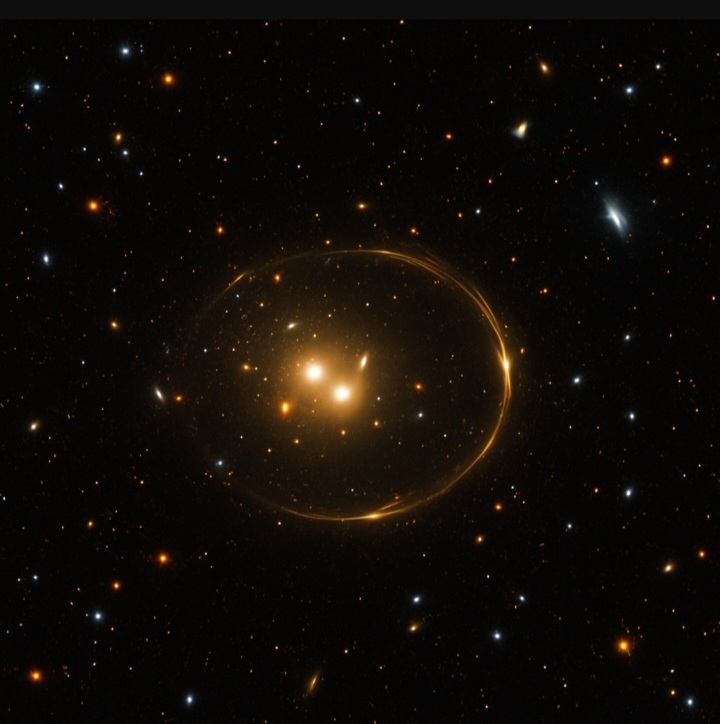The universe is vast, beautiful—and mostly invisible.
Over 95% of what makes up the cosmos is something we can’t see, touch, or directly detect. Astronomers call these elusive components dark matter and dark energy, and while we’ve yet to capture them in a lab, we see their fingerprints etched across galaxies, gravitational fields, and the expanding fabric of space itself.
So what are these mysterious entities, and what are the best scientific theories we have today to explain them?
Let’s explore the current landscape of cosmology’s biggest enigmas.
What Is Dark Matter?
Imagine watching a merry-go-round. You’d expect the horses on the outside to spin slower than those near the center. But in galaxies, stars on the outskirts orbit just as fast as those closer in. Why?
Dark matter.
Dark matter doesn't shine, absorb, or reflect light—hence the name. But its gravity shapes galaxies, bends light, and helps form cosmic structures.
Leading Theories for Dark Matter
1. WIMPs (Weakly Interacting Massive Particles)
WIMPs have long been the frontrunners. These hypothetical particles would interact via gravity and the weak nuclear force but not electromagnetism. This makes them hard to detect—but perfect candidates to explain the invisible mass.
Major experiments like XENONnT and LUX-ZEPLIN are designed to detect the faint collisions WIMPs might cause in ultra-sensitive detectors. So far, they’ve found nothing—but they’ve ruled out swathes of parameter space.
2. Axions
First proposed to resolve a puzzle in quantum chromodynamics, axions are ultra-light particles that could behave like a wave spread across galaxies. Their behavior might explain dark matter without requiring collisions.
Searches like the Axion Dark Matter eXperiment (ADMX) are trying to detect the conversion of axions into photons in strong magnetic fields.
3. Sterile Neutrinos
Unlike known neutrinos, which are ghostly but detectable, sterile neutrinos would interact only via gravity. If they exist, they could decay into detectable X-rays. Some intriguing X-ray signals (like the 3.5 keV line from galaxy clusters) have sparked debate, though the evidence remains inconclusive.
4. Primordial Black Holes
Could black holes formed just after the Big Bang account for the missing mass? In theory, yes. In practice, gravitational lensing and other data limit how much of dark matter could consist of these ancient objects.
5. Modified Gravity (MOND and Beyond)
Rather than adding unseen matter, some theories propose tweaking the laws of gravity. Modified Newtonian Dynamics (MOND) and its relativistic versions, like TeVeS, can explain galactic rotation curves. But these theories struggle to match cosmic microwave background (CMB) data and large-scale structure.
What Is Dark Energy?
While dark matter pulls things together, dark energy pushes space apart. It’s the force behind the accelerating expansion of the universe—first discovered in the late 1990s by observing distant supernovae (Perlmutter, Riess, and Schmidt shared the Nobel Prize in 2011 for this revelation).
But what exactly is it?
Leading Theories for Dark Energy
1. The Cosmological Constant (?)
First proposed by Einstein, this theory suggests space itself has a constant energy density that never dilutes—even as the universe expands. This is the simplest explanation and forms the foundation of the Lambda Cold Dark Matter (?CDM) model.
Yet it comes with a massive problem: quantum field theory predicts a vacuum energy value 10¹²° times too large. This is sometimes called “the worst theoretical prediction in physics.”
2. Quintessence
Quintessence proposes a dynamic scalar field that changes over time and space. Unlike the constant ?, this field evolves—and might interact with other cosmic ingredients.
It’s a compelling idea, but there’s no observational evidence yet. The math works, but the universe hasn’t confirmed it.
3. Modified Gravity
Could the cosmic acceleration be a sign that General Relativity breaks down at large scales? Theories like f(R) gravity or braneworld models (e.g., Dvali–Gabadadze–Porrati or DGP) alter Einstein’s equations to produce accelerated expansion without invoking energy from “nothing.”
These ideas are testable, and some are constrained by data from gravitational waves and galaxy surveys, but none have overtaken ?CDM as the dominant paradigm.
4. Vacuum Energy and the Multiverse
Some physicists propose that dark energy is a result of vacuum fluctuations—and that our universe is just one in a vast multiverse, each with different vacuum energies. In such models, anthropic reasoning explains why our universe has just the right value for life to form.
It’s intriguing—but also speculative and nearly impossible to test.
The Current Best-Fit Model
Despite their mystery, dark matter and dark energy are key parts of the standard cosmological model.
• Dark Matter: Cold, slow-moving particles (like WIMPs or axions) that form the scaffolding of galaxies.
• Dark Energy: A cosmological constant that makes up nearly 70% of the universe’s energy budget.
Together, they shape the Lambda Cold Dark Matter (?CDM) model—the one that best fits data from the cosmic microwave background, galaxy surveys, supernova measurements, and gravitational lensing.
But this model leaves unanswered questions. And that’s part of what makes cosmology so exhilarating: we’re mapping the shape of a mystery in real time.
Final Thoughts
As scientists build more sensitive detectors and map the universe with increasing precision, we’re getting closer to understanding these dark forces. Each experiment—whether it finds something or not—tightens the net, sharpens the questions, and nudges us toward clarity.
The universe is still whispering secrets in starlight and gravity. And we're still listening.
References (Print)
• Carroll, Sean. The Particle at the End of the Universe. Dutton, 2012.
• Randall, Lisa. Dark Matter and the Dinosaurs. Harper, 2015.
• Peebles, P.J.E. "Dark Matter and the Origin of Galaxies and Galaxy Clusters." Phys. Today, 1984.
• Riess et al., “Observational Evidence from Supernovae for an Accelerating Universe.” Astronomical Journal, 1998.
• Planck Collaboration. Planck 2018 results. VI. Cosmological parameters. A&A, 2020.
Keywords
what is dark matter, dark matter explained, dark energy theories, quintessence dark energy, lambda CDM model, universe expansion mystery, axions and WIMPs, modified gravity, best dark matter models, dark energy cosmology
Hashtags
#DarkMatter #DarkEnergy #CosmicMystery #UniverseExpansion #Astrophysics #WIMPs #Axions #Quintessence #LambdaCDM #ScienceExplained #SpaceTime
|
|

